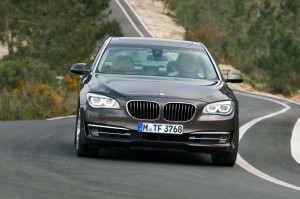
Coming at you. BMW will divert more European-made vehicles -- such as the new 7-Series - to the US market in the months ahead.
Already locked in a bitter battle with key rivals for dominance in the North American market, don’t be surprised to see BMW launch even more aggressive marketing efforts in the final months of 2012 – and it will soon get the products it needs to maintain a position as number one in the U.S. luxury segment, it appears.
It’s a reversal of the maker’s recent strategy that had it actually holding back on U.S. product availability due to a weak dollar that made it more expensive to import European-made vehicles.
But that was before the economy of the European Union began to unravel. And with countries like Greece, Spain and Italy in deep recession while even Germany has to retrench there’s significantly less demand for BMW’s blend of mid to high-end luxury products.
As with competitors like Mercedes-Benz and Audi, BMW has had to adjust line rates in recent months to reflect downward demand. But it is now planning a different strategy. With the U.S. automotive market leading this country out of recession BMW thinks it can up shipments of European-made products to State-side showrooms, confirmed global marketing chief Ian Robertson.
The decision should mean “tens of thousands” more vehicles will be shipped to the U.S., as well as Asia and other markets that might be able to offset struggling Europe, Robertson told reporters. Considering that even China – which has been the world’s fastest-growing luxury car market – is slowing, BMW’s North American subsidiary could receive the bulk of those diverted vehicles.
Europe, Robertson lamented, has “a lot of bumps in the road” before it will level off. By most estimates, sales on the Continent will continue to dip by as much as another 500,000 units in 2013. When things turn around appears to hinge on bringing the debt crisis under control in Greece, Spain, Italy and several other national markets – but growing public resistance to regional austerity measures has raised concerns about the pace of recovery and even the long-term viability of the so-called Eurozone.
The U.S., on the other hand, has seen automotive sales grow by 14.5% for the first nine months of the year, with the luxury market at the vanguard of that recovery.
BMW nudged past Mercedes – as well as a Lexus weakened by earthquake-related product shortages — to become the best-selling luxury brand in North American in 2011. It remains in a bitter battle for dominance this year.
Both makers have resorted to aggressive marketing campaigns to drive up their sales numbers – even though both companies insist that being number one is not essential to their strategies.
Having more product availability could help BMW lock in a lead – but could also require it to become even more aggressive with incentives to keep the metal moving.
